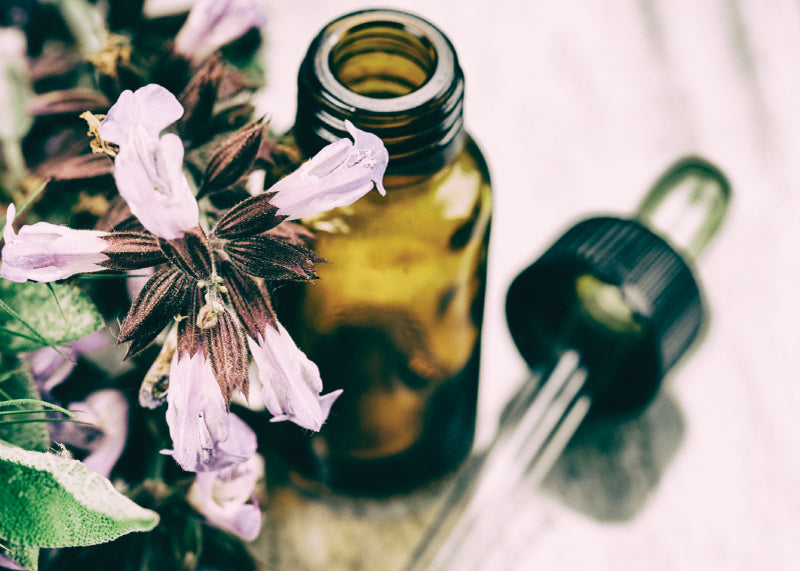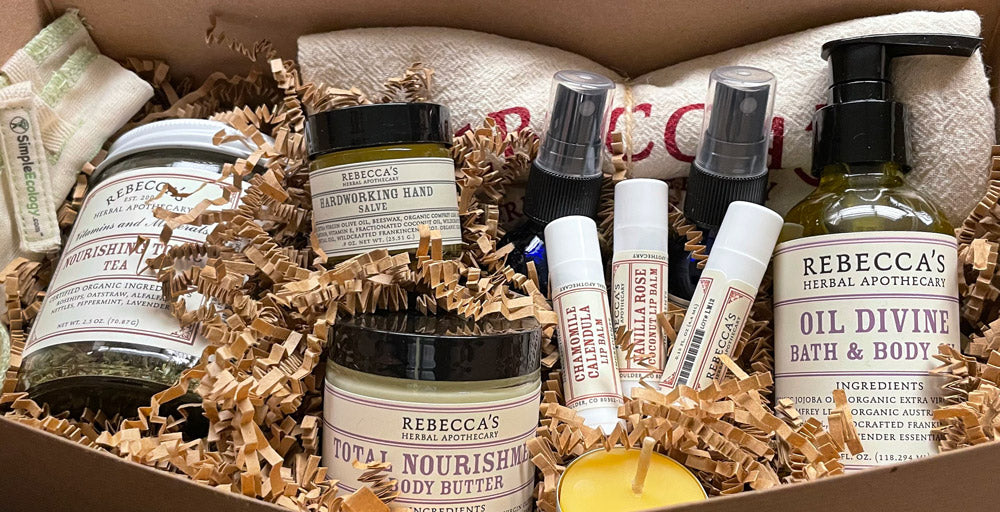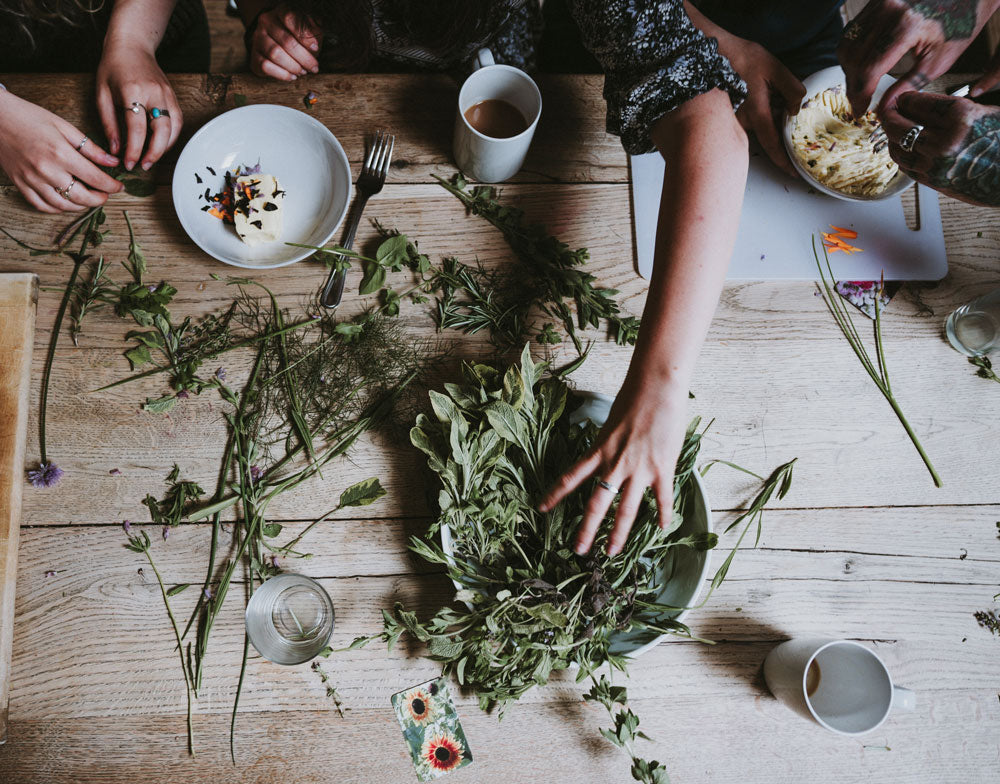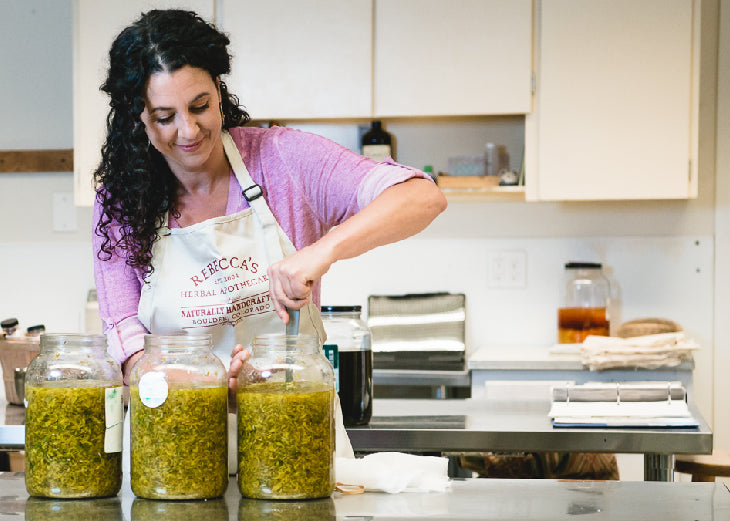Herb Article
Yarrow
By Kate
 Yarrow
Yarrow
Achillea millefolium
Aster Family (Asteraceae)
Parts used
Herbalists have used Achillea millefolium and Achillea lanulosa interchangeably for centuries. Achillea millefolium is what is typically found in commerce. In Colorado, we also find Achillea lanulosa (Tansy Yarrow). The flower of Yarrow is an umbel (a plateau like cluster of little flowers) that is white with occasionally slight hues of pink, brown and purple. The leaves are 4"-5" long and are very soft, fern-like curls with thousands of tiny feather like leaves that climb up the stalk. The name Milfoil literally means a thousand leaves. The aerial parts of the plant are most often used, meaning the parts of the plant that grow above ground. Here are a few names for Yarrow that may give an indication of the plant's characteristics and uses: Milfoil, Wound Wort, and Carpenter's Weed. Also the name Achillea comes from the warrior Achilles who is said to have used yarrow in combat. Other tales tell of how Achilles was dipped into a tea bath of Yarrow and the only part left untouched was his heel (or hoof) which was where the arrow punctured him (hence the term Achilles heel) and the significance of the power of protection that Yarrow carries.
Medicinal Properties
Yarrow is amphoteric, which means it can have opposite healing traits. Yarrow is astringent, and in most cases, it can stop bleeding, in other cases it can move blood. Yarrow has been traditionally used to treat fevers, colds, winter illnesses and also assists the healing of inflammation, circulation and muscle aches; specifically for cuts, bruises, blood blisters, scrapes and deep wounds (even to the bone). Yarrow is also a good medicine for certain types of female menstrual ailments, such as cysts and regulating menstrual flow. Hemorrhoids can also be helped with use of Yarrow. Because of its bitter quality, it can be used in moderation in digestive formulas. A few more interesting facts about Yarrow are that it relieves pain and assists relaxation.
Preparations & Applications
Yarrow is used in different forms to treat the variety of ailments mentioned above. Most commonly, the leaves are made into a poultice for wounds and applied to stop bleeding. Other applications are taking Yarrow as a tea (not so tasty) or a tincture of the fresh or dried flowers. In addition, Yarrow can be used in the form of a flower essence or an essential oil. I find the essential oil to have a magical aroma and therapeutic healing properties. Yarrow essential oil in a bath can be detoxifying as yarrow is an antiseptic and diuretic.
Recently, a friend of Rebecca's Apothecary commented that their husband, a carpenter and builder swears by Yarrow tea as a hand soak for scrapes and cuts. This testimonial is supported in the resources listed below.
On a spiritual level, Yarrow is a protector. Yarrow helps one who is overly sensitive to their environment. Specifically, Yarrow is helpful for physic protection. This is perhaps why Yarrow is recommended for healers as well as warriors.
A simple recipe
Yarrow Massage Oil
Base of infused olive oil (could be Yarrow infused oil or St. John's infused oil) 2oz
Yarrow Essential Oil 3-6 drops to your preference
Use as a massage oil for feet and hands for protection and/or inflammation.
Safety Precautions
Certain people can be allergic to Yarrow. A chemical (thujone) in Yarrow can trigger uterine contractions, so pregnant women should avoid the herb. Do not use with sedatives, diruretics, blood pressure drugs or blood thinners. The ornamental species of Yarrow which are typically bright colored yellows and pinks are not used medicinally.
References
Culpepper's Color Herbal by Michael Stringer and David Potterton
Guide to Colorado Wildflowers by G.K. Guennel
The Green Pharmacy Herbal Handbook by James A. Duke, Ph.D.
The Book of Herbal Wisdom by Matthew Wood
Growing 101 Herbs that Heal by Tammi Hartung
Aromatherapy, A Complete Guide to the Healing Art by Kathi Keville and Mindy Green




